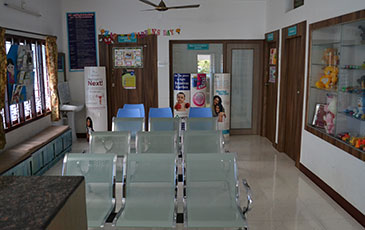Febrile Seizures
Author:Dr. P. Siva Bharathi, M.D (Peds), AB (USA).
What is Febrile Seizures?
A febrile seizure is a convulsion (Fits) in young children (6 months to 6 years) that may be caused by a sudden increase in body temperature, commonly from an infection.
What is the long term outcome of Febrile siezures?
Fortunately, febrile seizures aren’t as dangerous as they may look. A seizure triggered by a fever is usually harmless. They can be frightening to watch, but do not cause brain damage or affect intelligence.
Dose my child has epilepsy?
Having a febrile seizure does not mean that a child has epilepsy; epilepsy is defined as having two or more seizures without fever present.
- How dose febrile seizure manifest? ,During febrile seizures your child will have the following
- fever usually higher than 102 F
- Lose consciousness
- Roll the eyes upwards
- Twitching of the both arms and legs
- May have trouble breathing
What are the different types of Febrile seizures?
Simple febrile seizures. The most common type, and they can last from a few seconds to 10 minutes and stop on their own.
Complex febrile seizures. In this type the seizures lasts longer than 15 minutes or occurs more than once within 24 hours or is confined to one side of your child’s body.
Do you need to see a doctor after each febrile seizure episode?
You need to see a doctor if the seizure lasts longer than five minutes or is accompanied by vomiting, if there was problems with breathing or if there is extreme sleepiness after the episode
Causes of febrile seizures?
Any thing that cases your child’s temperature to rise (Fever) like infection (Bacterial or viral) and Immunizations cause febrile seizures in your child.
Will my child get seizures during the subsequent fevers?
About a third of children who had a febrile seizures will get another one with a subsequent fever and this risk is higher if your child had lower fever at the time of the first febrile seizure, if your child was younger than 15 months at the time of first febrile seizures or if an immediate family member has a history of febrile seizures.
Causes of febrile seizures?
What to do during an episode of febrile seizures? Be calm and follow the underlying steps (If possible, try to time the seizures using a clock)
- Place your child on a safe surface like the floor with his or her body placed to one side, keeping the face to the same side, to prevent your child from inhaling vomit if vomiting occurs.
- Don’t restrain your child while he or she is shaking (Don’t try to stop your child from shaking)
- Don’t place anything in your child’s mouth during the seizures
- If the seizures lasts longer than 3-5 minutes then use Rectal diazepam (As prescribed by your doctor)
- Once the seizures stops, your child will be drowsy for some time (Usually for 5-15 min) before he or she comes back to usual senses. Give your child comfort during this time.
- If there is any fever -then put some wet cloth over the forehead and over the body to bring down the temperature.
- Remember, it is not necessary to lower your child’s fever to stop febrile seizures, so don’t try to give your child any fever medication during a seizure
Does my child need to undergo any test?
Take your child to a pediatrician for the first episode of febrile seizures who will evaluate your child by doing a physical exam on your child and might order some more tests like EEG (Electroencephalogram) if your child had a complex febrile seizures and a Lumbar puncture (Spinal tap) if your doctor suspects a brain infection.
How can I prevent another episode of febrile seizures?
Most often the febrile seizures occur on the first day of the illness before you realize that your child is ill. But if you notice your child to be ill or having fever give your child paracetamol (Dose:15mg/kg ) or Ibuprofen (Dose:10mg/kg).
How do I know my child is having fever?
Try to use a thermometer to measure your child’s temperature and your child has fever if his or her temperature is above 99F (37.2C) if taken under the armpit or if it is above 100 F (37.8C) if take in the mouth



